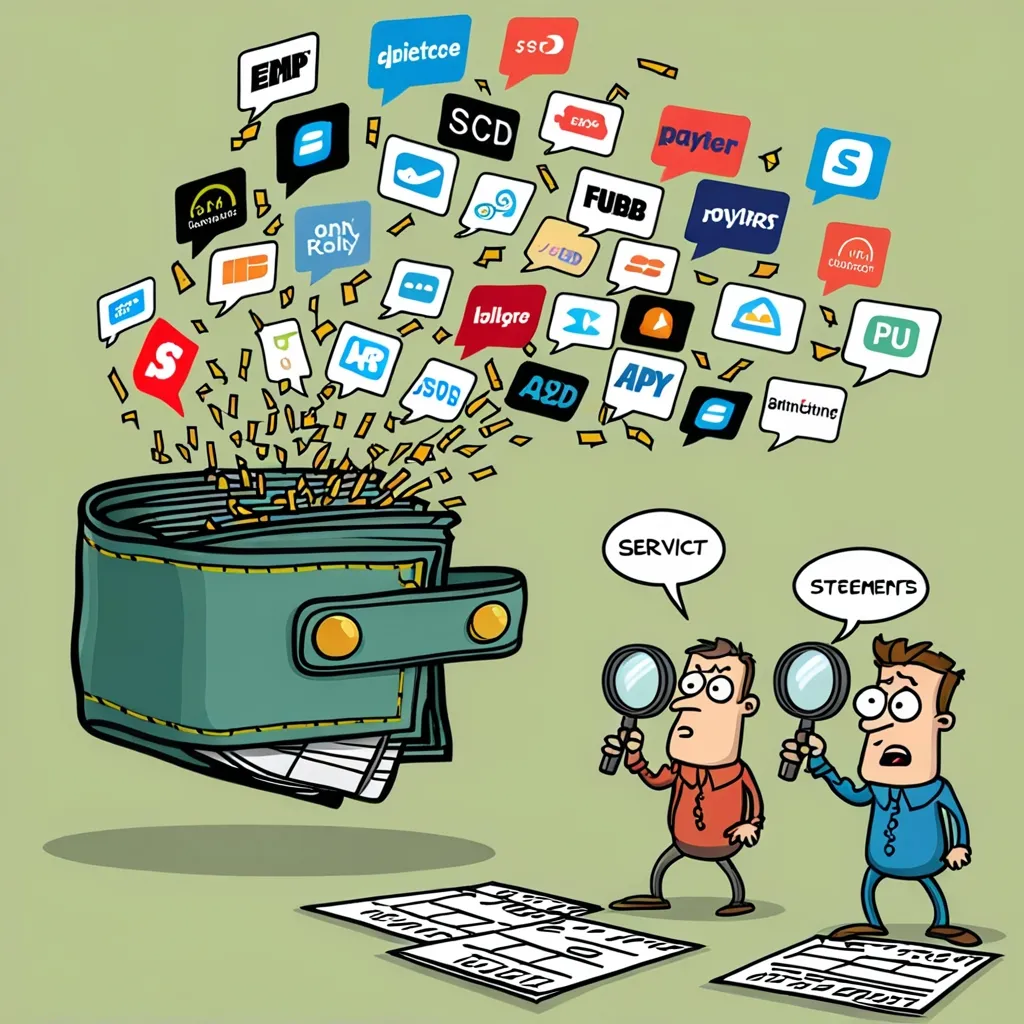In today’s digital world, subscription services are a big part of our lives. From watching TV shows to streaming music and storing files in the cloud, these subscriptions offer so much convenience. But, they also mean we’re often paying monthly fees without even realizing it.
I want to talk about the hidden costs of these subscription services. We sign up for these services with all the best intentions. Think about that streaming service you got to watch a specific show. Once the season is over, you might not even use the service that much, but you’re still paying for it. This forgetfulness isn’t just a minor issue; it’s a massive moneymaker for companies. Some research suggests customer forgetfulness can boost company revenues by up to 200%.
The subscription economy is booming, and it’s showing no sign of slowing down. Experts predict it will reach a whopping $1.5 trillion by 2025. This business model is super attractive for companies because it promises regular, predictable revenue. It’s far cheaper for companies to keep an existing customer than to hunt for new ones all the time. But let’s face it; the whole model hinges on customer inertia. Basically, people keep paying for stuff they don’t use because it’s easier to do nothing.
So, how much are we really spending? The average household dishes out over $300 per month on subscriptions and memberships. That’s around $3,600 a year! And get this: most people don’t even realize how much they’re spending. A survey found that Americans typically underestimate their monthly subscription costs by $133. Around 42% of people admitted they’ve forgotten about a subscription they were paying for but not using.
It’s time to audit your subscriptions. Go ahead and check your bank statements for automatic payments linked to subscriptions. Make a list of all the services you’re paying for—streaming, magazines, gym memberships, cloud storage, everything. This simple step will give you a clear picture of where your money is going.
Alright, let’s talk about saving some cash. First up, set a budget. Decide how much you’re willing to spend each month on subscriptions and stick to it. This can help you avoid racking up unnecessary expenses down the road. Next, cancel any services you no longer use. It might not be a thrilling activity, but it’s effective. Consider looking for cheaper alternatives. For example, some streaming services offer lower fees if you’re okay with watching a few commercials. And don’t be shy about negotiating. Some companies might offer lower rates to keep you as a customer.
Free trials can be especially tricky. They often require your credit or debit card info, and if you miss the cancellation deadline, you’re automatically charged. To avoid this, mark the trial end date on your calendar so you can cancel if you don’t want to continue using the service.
Technology can be both a blessing and a nightmare in managing subscriptions. With just a few clicks, you can sign up for a new service. On the flip side, tools like subscription management apps offer dashboards to track and review your subscriptions, helping you dodge unwanted charges and stick to your budget.
Ever heard of dark patterns? Companies use these sneaky design tricks to make canceling subscriptions a hassle. They might hide cancellation buttons or make the process overly complicated. The Federal Trade Commission is stepping in to curb these practices with a “click to cancel” rule, which would require subscriptions to periodically ask customers to reenroll actively.
Taking control of your finances involves being proactive about your subscriptions. Set calendar reminders to review your recurring payments regularly. This helps you stay on top of your expenses and ensure you’re not paying for services you no longer use. Consider consulting a financial advisor if you’re perplexed by subscription management. They can offer professional advice on how to save more effectively. Utilizing budgeting tools can also help you track spending and make informed decisions.
To sum it up, canceling unnecessary subscriptions is an easy yet powerful way to save money and boost your financial well-being. By evaluating your subscriptions and making conscious decisions about your spending, you can kickstart financial stability. Each subscription you cancel is a step toward your financial goals, so don’t hesitate to make those tough calls. Your wallet—and your peace of mind—will thank you.






